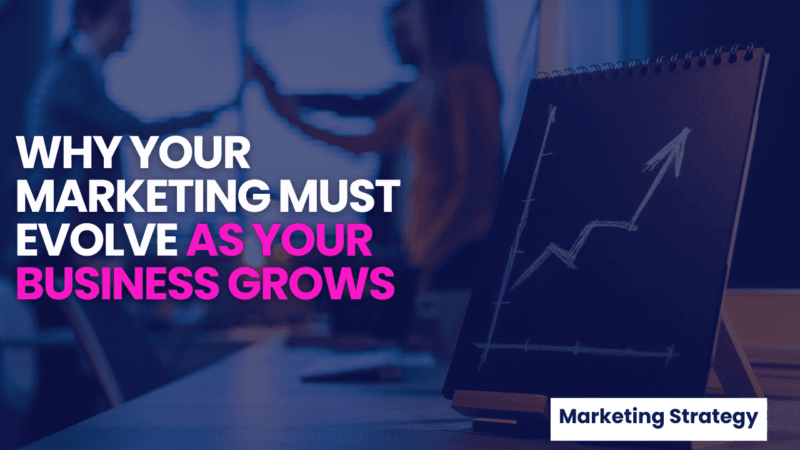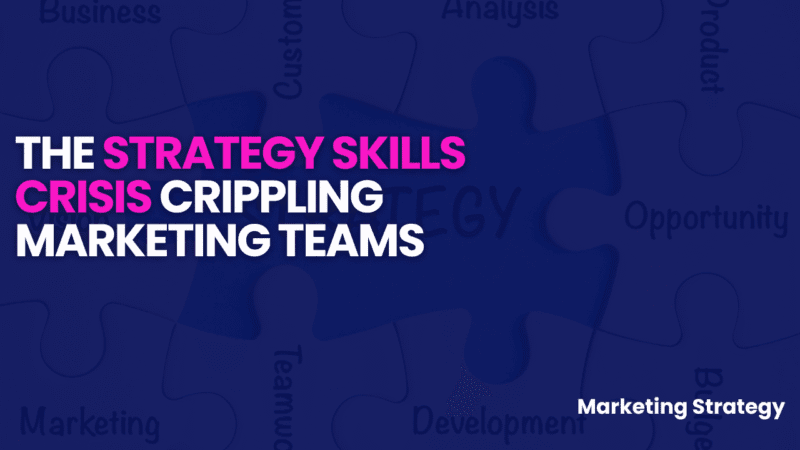
AI tools flood the marketing landscape with bold promises. Marketers globally are wondering if these tools will save them or replace them entirely. After 18 years in marketing across diverse industries, I’ve seen technology waves come and go. This one is different.
The reality about AI in marketing sits somewhere between the breathless hype and dismissive scepticism. I’ve witnessed firsthand how AI agents transform operations while also recognising where human expertise remains irreplaceable. Let me share what I’ve learned about this balance from working with businesses that have adopted AI into their work streams.
Where AI Actually Delivers Results
In my experience, AI agents have made their most meaningful impact in five key areas:
- Lead generation and qualification
- Content creation at scale
- Personalisation of customer journeys
- Customer support automation
- Marketing analytics
Take lead generation. AI agents like Drift, Qualified, and HubSpot Bots now streamline website lead capture, engaging users in real-time and qualifying leads before they reach sales. This proves especially effective in B2B, SaaS, and fintech, where high-value leads require quick engagement.
But the most transformative application I’ve seen involves personalising customer journeys. Working with a FinTech client, we implemented AI to personalise onboarding for SMEs based on business size, funding stage, and first-week actions. Users received tailored guides, demo videos, and prompts specific to their situation.
The results spoke for themselves: 40% faster onboarding completion, 20% increase in upgrades to paid plans, and previously hands-on support now scalable without increasing headcount. This meant not only working quicker and reducing costs but also providing customers with a streamlined journey without the delays that often plague onboarding processes.
What Humans Still Do Better
AI doesn’t replace strategic thinking it supports it. The real value still comes from human marketers who can interpret, prioritise and lead with intent.
Creativity and storytelling that leverage emotional narratives, cultural nuance, humour, irony, and surprise require deep human understanding of context and trends. While AI is making progress in ideation, original campaigns that break the mould still come from human creativity.
Empathy and emotional intelligence allow humans to understand shifting customer moods, global events, and social sensitivities. AI often misinterprets tone, while humans can adjust messaging to be reassuring, inspiring, or sensitive when needed.
Brand stewardship requires a human gatekeeper. Protecting a brand voice, reputation, and values demands human judgment. AI content frequently falls short through tone mismatches, hallucinated facts, or misaligned messaging that can dilute or contradict core values.
Ethical judgment remains firmly in human hands. The ethics of AI remain debatable precisely because AI learns from what we do. Without established ethical bodies managing AI, humans must provide this oversight.
Finally, complex relationship building in partnership marketing, influencer management, and community building relies on human connections that form the foundation of strategic marketing.
.
A Practical Framework for AI Implementation
The 80/20 rule
For resource-limited marketing teams wondering where to start, I recommend thinking about the 80-20 rule. Start by automating 20% of the tasks that consume 80% of your time but don’t directly require creative or ethical judgment. This typically includes reporting, audience segmentation, and basic content repurposing.
Use AI to Accelerate, Not Own Outcomes
Follow the principle of using AI to accelerate output, not to own outcomes. Humans remain responsible for strategy, brand voice, and final approvals. I’ve found success with what I call the “trust, test, tweak” model: trust AI with low-risk tasks, test outputs constantly, and tweak your prompts, workflows, and review processes to improve results.
Avoid the “Plug and Play” Myth
Most businesses struggle with implementation because they overestimate AI’s plug-and-play readiness. They assume they can simply adopt an AI tool and start seeing results immediately. In reality, you need clear prompts, proper training, and sometimes process redesign.
Manage the Human Side of Change
Change management presents another common challenge. Internal adoption can be difficult, with team members resistant to new tools. This requires internal training and clear communication to reassure staff that AI will help them rather than replace them.
Prioritise Data Quality and Governance
Data quality issues frequently undermine AI effectiveness, which depends heavily on the quality of your CRM, content libraries, and customer data. Many clients also lack AI usage policies, especially among SMEs and smaller businesses, making governance and risk management problematic.
Addressing the Fear Factor
AI understandably frightens many marketers. I’ve spent 18 years in marketing, becoming chartered through the Chartered Instiute of Marketing (CIM) and investing heavily in my professional development. The thought that AI could perform my job in the blink of an eye feels threatening.
But I’m embracing this change by learning and adapting. I’m becoming an expert in AI for my role, which means clients will need my expertise to ensure their AI works effectively. When reassuring marketing teams concerned about AI’s impact, I position it as an opportunity rather than a threat.
Humans will move up the value chain from doing to directing, from producing to strategising. I focus on skill enhancement, positioning AI as a tool that makes marketers faster, sharper, and more creative rather than something replacing their judgment.
Regular training helps upskill teams to become more AI-efficient. I also celebrate the human strengths that remain irreplaceable: creativity, empathy, ethics, cultural intuition, and complex relationship building.Starting small with low-risk tasks like summarising reports or generating ideas for posts builds confidence. Early successes create enthusiasm and reinforce that AI functions best as a collaborative tool that handles tasks that would otherwise take weeks or months
Humans will move up the value chain from doing to directing, from producing to strategising. I focus on skill enhancement, positioning AI as a tool that makes marketers faster, sharper, and more creative rather than something replacing their judgment.
First Steps for AI Implementation
Start with a time audit
Time is your most valuable resource. Pinpoint repetitive tasks that slow you down but don’t need human creativity or judgment. That’s where AI can step in.
Choose one simple use case
Don’t try to overhaul everything at once. Start with something manageable like social media scheduling, caption writing, A/B test suggestions, or basic reporting.
Pick tools that don’t need a tech team
Look for intuitive, low-code AI tools. Canva’s Magic Write, ChatGPT, or Buffer with AI support are good examples.
Nominate an ‘AI champion’
This person doesn’t need to be technical, they just need curiosity. Let them explore tools, test outputs, and create a few best practices the rest of the team can use.
Test, learn, expand
Many small teams start by using AI to handle simple, time-consuming tasks like drafting social posts or summarising blog content. Even that small shift can save hours each week. Once they build confidence, it’s easier to expand into more advanced use cases like email marketing or customer feedback always ensuring a human reviews and refines the final output.
My Predictions for the Next 18 Months
Looking ahead, I believe AI will become a core team member rather than just a tool. We’ll see a rise in marketing generalists powered by AI, with personalisation reaching SME level and content production becoming smarter and faster.
Low-code and no-code AI marketing platforms will explode in popularity as they eliminate the need for technical expertise. Ethical AI will emerge as a competitive advantage, with SMEs that demonstrate transparency, ethics, and human oversight winning trust faster than those who over-automate or mislead.
Smaller teams will hire fewer specialists and rely more on adaptable generalists who can prompt, review, and oversee AI. This will enable SMEs to deliver one-to-one marketing experiences at scale without massive teams or budgets, creating significant cost savings. Resource-limited teams who invest in AI literacy, learning how to prompt, create, and apply AI thoughtfully, will leapfrog slower competitors by 2026. This makes upskilling in AI capabilities critical for marketers now.

Maintaining the Human Touch

As AI evolves rapidly, maintaining the human element becomes increasingly important. My non-negotiable rule: human editing is mandatory. Even if AI drafts 80% of the content, a human always reviews and adjusts before anything goes public.
Personalisation must go beyond first names. While AI can personalise by name or industry, humans should add deeper personalisation by referencing real conversations, acknowledging specific pain points, or using storytelling that genuinely resonates.
Customer journeys need human touchpoints. People recognise and often dislike interacting solely with bots, so maintaining human elements within the customer journey remains essential. Ensuring empathy in communications matters too, as AI-generated text often lacks the emotional nuance that builds connection.
My approach to serving resource-limited marketing teams has shifted from hands-on delivery to teaching and empowering. Where I once focused on creating content, running campaigns, and directly managing social media, I now emphasise helping clients learn to leverage AI themselves while providing strategic oversight.
The rise of AI hasn’t reduced the need for human marketers. It has shifted the value toward strategic thinking, creativity, and ethical leadership. That’s precisely where I focus my support for Marketing Collaborators clients.
AI in marketing isn’t about replacing humans but augmenting them. The most successful marketers will be those who learn to collaborate effectively with these new tools while maintaining the uniquely human elements that technology cannot replicate. For resource-limited teams, this balance offers unprecedented opportunities to compete at levels previously reserved for those with much larger budgets and teams.
How Marketing Collaborators Can Help
Whether you’re just starting with AI or trying to make your marketing team more efficient, Marketing Collaborators is here to guide you every step of the way. We work alongside SMEs and startups to:
- Audit your current marketing activity and identify quick wins for automation
- Recommend and test practical AI tools that suit your team, goals, and budget
- Train your team on how to use AI confidently without losing the human touch
- Develop sustainable workflows that blend AI efficiency with brand consistency
- Act as your strategic sounding board, helping you stay focused on what really matters
We believe AI should enhance your creativity, not replace it and we’re here to help you make that happen without the overwhelm.






1 thought on “AI Agents in Marketing: Evolution or Extinction?”
Comments are closed.